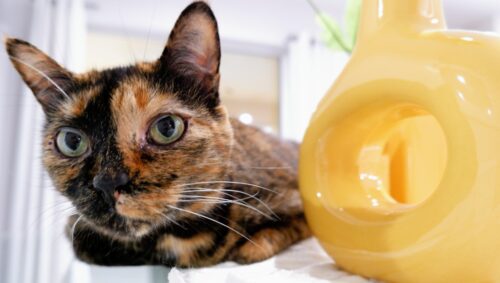
Most of us don’t pay attention to the bottle of Windex or can of Lysol sitting on a shelf our cats can get to, or even what sort of flowers are in the beautiful bouquet we received from our spouse. It’s time to start paying attention and possibly save our cat’s life.
How can our cat get poisoned? Most poisoning happens when the cat ingests something that’s toxic and can even get poisoned from grooming should something toxic as lily pollen be on their coat. As we know cats are regular groomers and some even obsessed, so we must ensure our home is a safe place for them.
How do we know our cat may have been poisoned? Look out for signs such as diarrhea, vomiting, drooling. Tremors, seizures and respiratory issues that lead to coughing or sneezing may be another sign. If we don’t pay attention to some of these sings and do not get our cats examined, this can lead to liver failure, kidney failure and ultimately death.
To make it easier…. If your cat is acting a little off, something is wrong and should lead to a vet visit as soon as possible. Our feline friends as masters of masking pain so we must be cautious. If you do suspect your cat has been poisoned, call the Pet Poison Helpline at 1-800-213-6680 and seek veterinary assistance as soon as possible.
Some things that can poison our fur children are lilies, poinsettias, holly, mistletoe, chocolate, onions, garlic, household cleaners, human medication and a whole lot more. It’s best to educate ourselves in what can hurt our animals and start putting things away or throwing them out.
I didn’t know until a few years ago how toxic lilies are. Not just by ingestion, but even the pollen. It’s quite surprising how many cats die because of this pretty plant we got for our birthday or whatever celebration.
When it comes to household cleaners, be sure to check which ones are safe for cats. Many cat parents don’t realize their surface cleaner, toilet bowl cleaners and even carpet cleaners can be toxic to cats. In all honesty, we can even make our own safe ones right at home that do the same job, or even better.
www.preventitivevet.com is a fabulous read that get’s into these types of household hazards. If you have a cat, I would really urge you to click on the link and give it a read. Once we educate ourselves with what is good and bad for our cats, we can educate ourfriends and family. If the word of mouth keeps going, imagine how many lives we can save

0 Comments